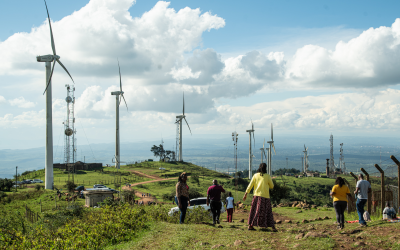Insurability: A New Lens on Climate Risk and Financial Resilience
As the climate crisis reshapes risk, a new report from Howden highlights why insurability is becoming a key driver of investment, resilience, and long-term value; how insurance signals are shaping the path forward.

In a world of increasing climate volatility, insurance is no longer just a means of protection – it’s a financial signal. A quiet but powerful indicator of how risk is understood, governed, and priced.
That signal is becoming harder to ignore. As physical and transition risks escalate, insurers are re-evaluating their boundaries. What was once routinely covered is now being reassessed. Premiums are rising. Coverage is shrinking. And in some cases, insurability is disappearing altogether.
The Insurability Imperative, the latest report from Howden’s Climate Risk and Resilience team, explores what this means for risk, resilience and decision-making across sectors and why insurability is emerging as a strategic priority for business, finance and government.
Why insurability matters
At its core, insurability is the ability to secure insurance cover at a price that reflects a risk’s profile. But more than that, it serves as a proxy for something deeper: the market’s confidence in how well a risk is understood, managed, and mitigated.
Where that confidence erodes, capital tends to follow. The logic is simple: if something can’t be insured, it’s unlikely to be financed, developed, or scaled.
This isn’t just about isolated high-risk assets. Entire sectors – from agriculture and real estate to energy and infrastructure – are facing structural questions about whether their current risk profiles remain acceptable to insurers. In turn, this is beginning to reshape how investors, lenders and policymakers think about viability and value.
Exploring the key levers for understanding and improving insurability
The report outlines a practical framework for understanding and responding to insurability challenges and the opportunities that come with them. Among its insights:
- Insurability is now a lead indicator of climate resilience.
As underwriting criteria evolve; insurance is offering early signals about which risks are becoming harder to carry, long before regulatory or credit constraints take hold.
- Resilience is being priced in.
Organisations that invest in risk mitigation – from physical adaptation to improved governance – are seeing those efforts rewarded through more favourable coverage and access to capital.
- Data and modelling are shaping the rules of engagement.
Understanding how these metrics like Annual Average Loss (AAL) and Probable Maximum Loss (PML) influence coverage decisions is increasingly essential, as they play a critical role as standard markers of risk quality.
- Insurability is dynamic – and it can be influenced.
It’s not a binary state, but a function of how risk is presented, managed and shared. Early, transparent engagement with insurers can help organisations maintain or regain access to critical coverage.
- Public policy is playing a pivotal role.
Regulation, subsidies, and zoning decisions can either support or undermine insurability. Aligning public frameworks with insurance logic is key to closing the protection gap.
Turning insight into action
The Insurability Imperative doesn’t just describe the problem - it offers a roadmap for integrating insurance thinking into long-term planning. It makes the case for treating insurance not as a procurement line item, but as a lever of resilience and an enabler of investment.
By integrating insurance thinking early in project design and policy development, organisations can surface vulnerabilities before they become stranded risks. This includes engaging insurers as strategic partners, not just as end-of-pipeline providers – bringing them into conversations around adaptation planning, infrastructure development, and transition finance.
The report also highlights the importance of cross-sector collaboration. Maintaining insurability requires action not only from businesses and insurers, but from governments, regulators, and financial institutions. Public-private partnerships, better data sharing, and more adaptive regulatory environments can all help ensure that critical sectors remain insurable, and investable, in a changing climate.
Ultimately, insurability provides a new lens through which to make decisions: not only about what is viable today, but what will remain viable tomorrow. Those who act now to improve the clarity, credibility and resilience of their risk profiles will be better placed to access capital, secure insurance, and thrive in the transition.
Download the full report →
The Insurability Imperative: Using Insurance to Navigate the Climate Transition
Rowan Douglas, CEO Climate Risk & Resilience, Howden, will be speaking on a session titled 'De-risking the Transition - The Insurability Imperative' at the Climate Innovation Forum on Wednesday 25th June. Access he full agenda here.






